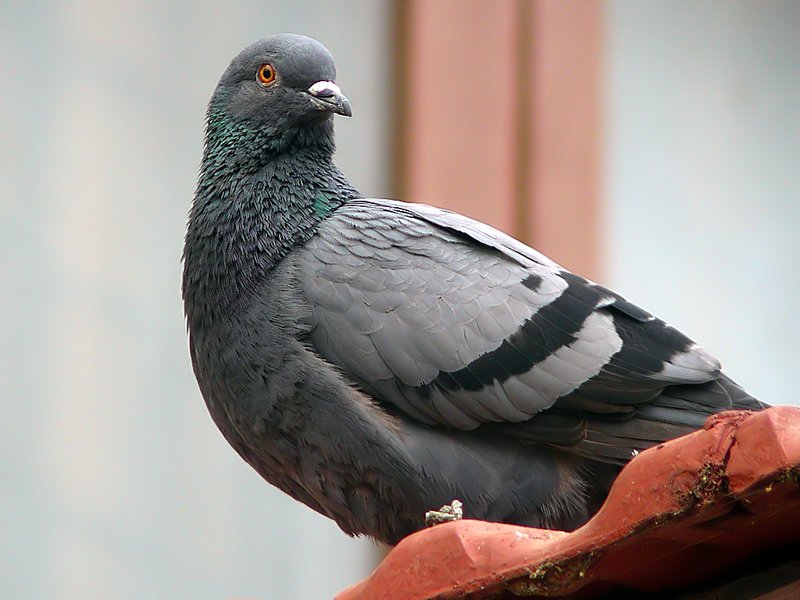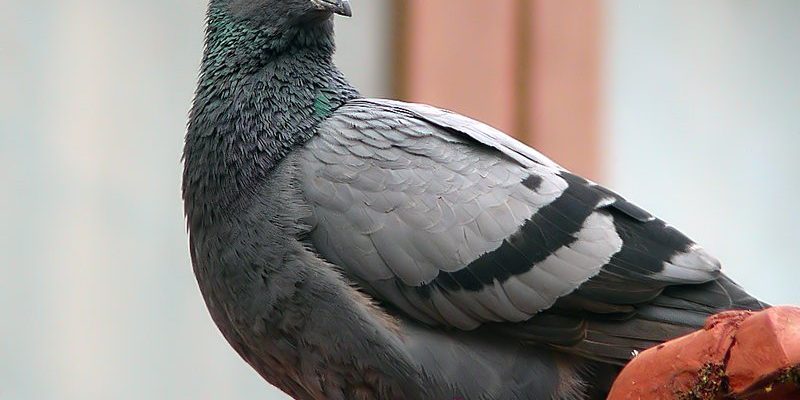
Feral pigeons, often seen perched on city buildings or strutting around urban parks, are a fascinating blend of adaptability and resilience. These birds, sometimes called rock pigeons, have managed to thrive in environments crafted by humans. Imagine the hustle and bustle of daily life—people rushing by, cars honking, and here they are, unbothered, pecking at crumbs left behind. They remind us how life can persist in the most unexpected places.
These birds are not just city dwellers, though. Originating from wild rock pigeons that nested on cliffs, feral pigeons have evolved over time to fit into various habitats across the globe. Each pigeon has a story, a journey that reflects our own connection to nature and the environment. So, let’s dive deeper into the world of feral pigeons, exploring their habits, characteristics, and the unique roles they play in our lives.
What Are Feral Pigeons?
Feral pigeons are domesticated descendants of rock pigeons. They got their start in the wild but have adapted to city life. These birds can be found almost everywhere—cities, towns, and even some rural areas. The versatility of feral pigeons is remarkable. They can thrive on various diets and are known for their strong homing ability. This adaptability is what makes them the quintessential bird of the urban landscape.
Unlike their wild relatives, feral pigeons have settled into a lifestyle that often depends on humans. They’ve learned to navigate our environment, from swooping in to snag a snack at a busy café to nesting on high-rise balconies. The sights and sounds of these birds fill our streets, often sparking both joy and annoyance among city dwellers. While some may see them as pests, others appreciate their beauty and resilience.
A Closer Look at Feral Pigeon Characteristics
| Characteristic | Details |
|---|---|
| Size: | About 12 to 14 inches in length. |
| Weight: | Approximately 9 to 13 ounces. |
| Color: | Varies widely, commonly gray with iridescent necks. |
| Habitat: | Urban and suburban areas, often nesting in buildings. |
| Diet: | Seeds, grains, and food scraps found in their environment. |
| Average Lifespan: | 4 to 6 years in the wild, up to 15 years in captivity. |
| Flight Speed: | Can reach speeds of 40-50 mph during flight. |
These characteristics are just the tip of the iceberg when it comes to understanding the feral pigeon. Their physical traits often make them stand out against the backdrop of urban life. You might notice the beautiful iridescent sheen on their necks when they catch the sunlight just right. This variation in color and size adds to their charm, making each bird unique.
Behavioral Traits of Feral Pigeons
Feral pigeons have intriguing behaviors that reveal their adaptability. They are highly social birds, often seen in flocks. This social structure helps protect them from predators and allows for easier foraging. When you see a group of them together, it’s not just a random gathering; they are communicating and working together to survive.
Their mating rituals are equally captivating. Pigeons often form lifelong monogamous pairs, showcasing their commitment to each other. Males perform a series of cooing calls and display behaviors to attract females, puffing up their chest and bowing. It’s a charming sight—almost like watching a dance unfold. Once they mate, they typically build nests in elevated areas, such as ledges or eaves, to provide safety for their young.
The Role of Feral Pigeons in the Ecosystem
Feral pigeons play a surprisingly vital role in the urban ecosystem. They help in seed dispersal, which can contribute to plant growth in unexpected areas. When they eat seeds, they often drop them in new locations, allowing plants to flourish in places they hadn’t previously thrived. This natural behavior helps keep our city landscapes vibrant.
Moreover, feral pigeons also serve as a food source for various predators. Birds of prey, such as hawks and falcons, often hunt these pigeons. This predator-prey dynamic is essential in maintaining balance within the ecosystem. Without feral pigeons, these predatory birds would face challenges in finding adequate food sources.
Challenges Faced by Feral Pigeons
While feral pigeons are resilient, they do face numerous challenges. Urbanization has led to habitat loss and increased pollution, which can impact their health. Pigeons are often at risk of ingesting harmful substances, which can lead to various health issues. It’s essential to recognize that just because they thrive in cities doesn’t mean they are always safe.
Additionally, the relationship between humans and feral pigeons can be complicated. Some people view them as nuisances, while others appreciate them. Instances of pigeon-related issues, such as droppings and disease transmission, can lead to calls for population control. Finding a balance between enjoying these birds and addressing the concerns they may bring is an ongoing challenge in urban areas.
How to Help Feral Pigeons
If you have a soft spot for these birds, there are ways you can help feral pigeons thrive in your community. One approach is to provide safe feeding areas where they can find food without the threat of predators. If you’re interested, consider creating a pigeon-friendly garden. This entails planting native plants that provide seeds and shelter for them.
You can also participate in local wildlife conservation efforts. Awareness and education about the ecological role of feral pigeons can foster a more harmonious relationship between humans and these birds. Organizing or joining community clean-up events can improve the overall environment, benefiting not only feral pigeons but all urban wildlife.
Feral Pigeon Myths and Misunderstandings
Unfortunately, feral pigeons are often misunderstood, leading to myths that can be damaging. One prevalent misconception is that these birds are carriers of diseases. While, like any wildlife, they can carry some pathogens, the risk to humans is often overstated. In reality, proper hygiene and responsible interactions with birds can greatly mitigate any concerns.
Another myth is that feral pigeons are dirty or unclean animals. In fact, these birds are quite meticulous about grooming themselves. They spend a significant amount of time preening their feathers to maintain cleanliness. Understanding these aspects of their behavior can help reshape the narrative surrounding them.
Feral Pigeons in Culture and Art
Feral pigeons have carved a unique niche in culture and art. From being featured in various paintings to being the stars of street murals, their presence resonates with urban life. Many artists draw inspiration from their graceful flight patterns and vibrant colors, reflecting on themes such as freedom and survival.
Additionally, these birds often symbolize peace and community, frequently depicted in literature and poetry. You might recall the iconic image of a dove, a relative of the feral pigeon, representing hope. This association underlines the deeper connection we share with these creatures, transcending mere observations.
Feral pigeons are more than just urban birds; they reflect our relationship with nature amidst the concrete jungle. Their adaptability, social behaviors, and ecological contributions provide a richer understanding of life in our cities. By recognizing these fascinating creatures and contemplating their role in the ecosystem, we can appreciate their presence and find ways to coexist harmoniously. So, next time you see a feral pigeon, take a moment to admire the resilience and beauty of this urban dweller.
FAQ
Can feral pigeons be trained?
Yes, feral pigeons can be trained, especially since they are descendants of domesticated pigeons. They can learn to recognize their caretakers and may even respond to calls or whistles. Many people have successfully trained pigeons for racing or as pets, showcasing their intelligence and adaptability.
Are feral pigeons harmful to the environment?
While feral pigeons can have some negative impacts, such as competing with native species for resources or spreading diseases, they also play essential roles in their ecosystems. Their actions in seed dispersal and serving as prey for predators can contribute positively to urban wildlife dynamics.
Do feral pigeons have any natural predators?
Yes, feral pigeons are prey to various predators. Birds of prey like hawks, falcons, and even some larger mammalian predators may hunt them. The relationship between these birds and their predators is crucial for maintaining balance in urban ecosystems.
Why do feral pigeons flock together?
Feral pigeons flock together for several reasons, including increased safety from predators and enhanced foraging opportunities. Being in a group allows them to communicate better and watch out for danger effectively. This social behavior is vital for their survival.
Can feral pigeons be domesticated?
Feral pigeons are technically domestic animals since they descended from domesticated rock pigeons. However, while they can be trained and may exhibit behavior similar to pet pigeons, they are generally more resilient and suited to wild conditions, making complete domestication challenging.
What do feral pigeons eat?
Feral pigeons have a varied diet primarily consisting of seeds, grains, and food scraps they find in urban environments. They are opportunistic feeders, which means they’ll eat whatever is readily available, including bread and other human-provided food.
How long do feral pigeons live?
Feral pigeons typically live around 4 to 6 years in the wild. However, in captivity, where they have access to better care and a controlled environment, they can live up to 15 years or more. Their lifespan can be affected by various factors, including diet, health, and environmental conditions.
Are feral pigeons dangerous to humans?
Feral pigeons are generally not dangerous to humans. While they may carry some pathogens, the transmission of diseases is relatively rare, especially with proper handling and hygiene. Being cautious and respecting their space can minimize any risks.
How do feral pigeons reproduce?
Feral pigeons are monogamous and typically mate for life. They can breed throughout the year, producing several broods. The female lays 1 to 2 eggs, which both parents incubate until they hatch. The nurturing behavior of both parents is heartwarming and critical for the chicks’ survival.
Can feral pigeons adapt to various climates?
Yes, feral pigeons are highly adaptable birds. They can thrive in various climates, from warm urban areas to cooler environments. Their ability to find food and shelter is fundamental for their survival, allowing them to adjust to different settings as they migrate or relocate.

